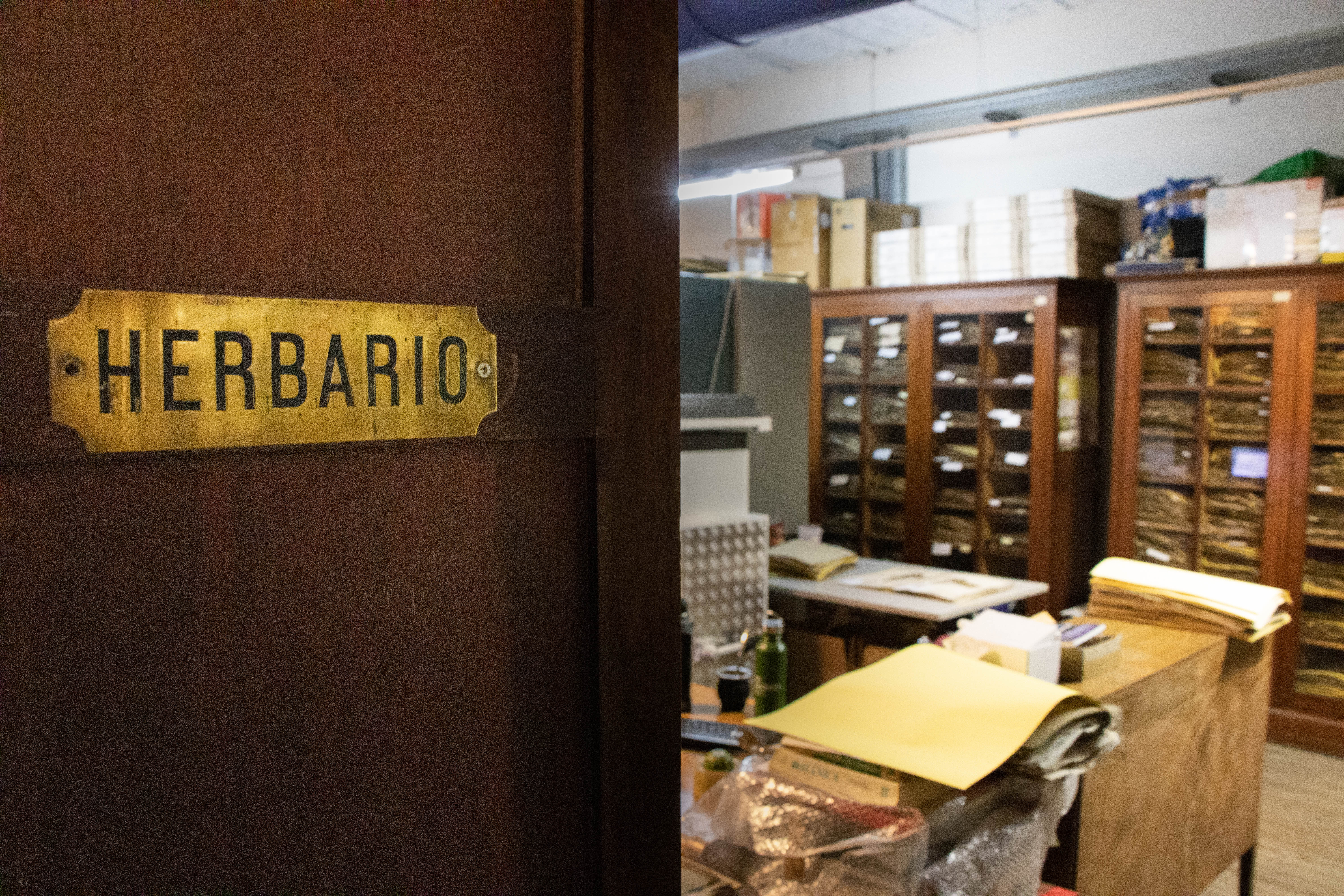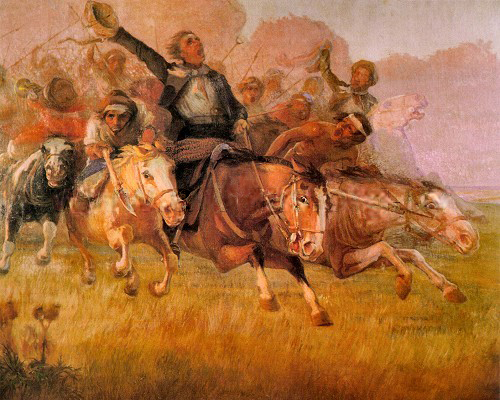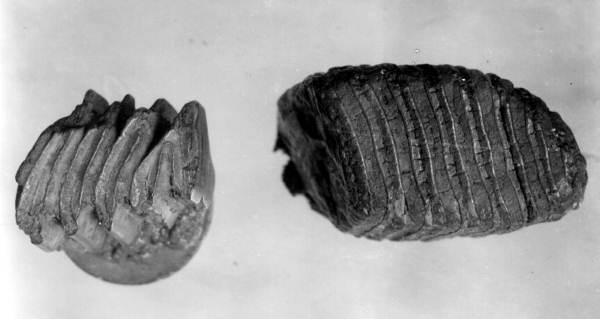|
National Museum Of Natural History, Uruguay
The National Museum of Natural History ( es, Museo Nacional de Historia Natural, links=no or ) in Montevideo is a natural history museum in Uruguay. The museum's first permanent exhibition is located at Miguelete 1825—the former Miguelete Prison—and the scientific collections, library and administrative offices are at Calle 25 de Mayo 582 in the Old City. History In September 1837 the Government of Uruguay established a commission to create a library and a national museum. Dámaso Antonio Larrañaga was appointed president of the commission, but the commission itself requested that take over. The commission undertook an expedition that December to excavate a glyptodon fossil from the banks of the Pedernal river in Canelones Department, the results of which were published in 1838. The museum itself first opened on 18 July 1838 in what is now the Plaza Zabala. In 1840, the poet Francisco Acuña de Figueroa was appointed director and for some years interest in the development o ... [...More Info...] [...Related Items...] OR: [Wikipedia] [Google] [Baidu] |
Montevideo
Montevideo () is the Capital city, capital and List of cities in Uruguay, largest city of Uruguay. According to the 2011 census, the city proper has a population of 1,319,108 (about one-third of the country's total population) in an area of . Montevideo is situated on the southern coast of the country, on the northeastern bank of the Río de la Plata. The city was established in 1724 by a Spanish soldier, Bruno Mauricio de Zabala, as a strategic move amidst the Spanish people, Spanish-Portuguese people, Portuguese dispute over the La Plata Basin, platine region. It was also under brief British invasions of the Río de la Plata, British rule in 1807, but eventually the city was retaken by Spanish criollos who defeated the British invasions of the River Plate. Montevideo is the seat of the administrative headquarters of Mercosur and ALADI, Latin America's leading trade blocs, a position that entailed comparisons to the role of Brussels in Europe. The 2019 Mercer's report on qual ... [...More Info...] [...Related Items...] OR: [Wikipedia] [Google] [Baidu] |
Herbarium
A herbarium (plural: herbaria) is a collection of preserved plant specimens and associated data used for scientific study. The specimens may be whole plants or plant parts; these will usually be in dried form mounted on a sheet of paper (called ''exsiccatum'', plur. ''exsiccata'') but, depending upon the material, may also be stored in boxes or kept in alcohol or other preservative. The specimens in a herbarium are often used as reference material in describing plant taxa; some specimens may be types. The same term is often used in mycology to describe an equivalent collection of preserved fungi, otherwise known as a fungarium. A xylarium is a herbarium specialising in specimens of wood. The term hortorium (as in the Liberty Hyde Bailey Hortorium) has occasionally been applied to a herbarium specialising in preserving material of horticultural origin. History The making of herbaria is an ancient phenomenon, at least six centuries old, although the techniques have changed l ... [...More Info...] [...Related Items...] OR: [Wikipedia] [Google] [Baidu] |
Héctor S
Hector () is an English, French, Scottish, and Spanish given name. The name is derived from the name of Hektor, a legendary Trojan champion who was killed by the Greek Achilles. The name ''Hektor'' is probably derived from the Greek ''ékhein'', meaning "to have", "to hold", "to check", "restrain". In Scotland, the name ''Hector'' is sometimes an anglicised form of the Scottish Gaelic ''Eachann'', and the pet form ''Heckie'' is sometimes used. The name of Sir Ector, the foster father of King Arthur, is also a variant of the same. Etymology In Greek, is a derivative of the verb ἔχειν ''ékhein'', archaic form * grc, ἕχειν, hékhein, label=none ('to have' or 'to hold'), from Proto-Indo-European *'' seɡ́ʰ-'' ('to hold'). , or as found in Aeolic poetry, is also an epithet of Zeus in his capacity as 'he who holds verything together. Hector's name could thus be taken to mean 'holding fast'. Cognates *Irish: ''Eachtar'' *Italian: ''Ettore'' *Portuguese: ''Heitor'' *G ... [...More Info...] [...Related Items...] OR: [Wikipedia] [Google] [Baidu] |
José Gervasio Artigas
José Gervasio Artigas Arnal (; June 19, 1764 – September 23, 1850) was a political leader, military general, statesman and national hero of Uruguay and the broader Río de la Plata region. He fought in the Latin American wars of independence against the Spanish Empire, but also against the Portuguese Empire and the centralist government of Buenos Aires in the pursuit of political and civil liberties for the peoples of the Viceroyalty of the Río de la Plata. He is considered a ''Libertador'' of Latin America and a national hero in Uruguay, sometimes referred to as "the father of Uruguayan nationhood". His biggest political project was the creation of the Federal League, a confederation of South American provinces under a federal style of government inspired by the United States. Biography Early life Artigas was born in Montevideo on June 19, 1764. His grandparents were from Zaragoza, Buenos Aires and Tenerife (Canary Islands). His grandparents fought in the War ... [...More Info...] [...Related Items...] OR: [Wikipedia] [Google] [Baidu] |
Josephoartigasia
''Josephoartigasia'' is an extinct genus of enormous Dinomyidae, dinomyid rodent from the Early Pliocene to Early Pleistocene of Uruguay. The only living member of Dinomyidae is the pacarana. ''Josephoartigasia'' is named after Uruguayan national hero José Artigas. It contains two species: ''J. magna'', described in 1966 based on a left mandible, and ''J. monesi'', described in 2008 based on a practically complete skull. Both are reported from the San José Member (geology), Member of the Raigón Formation by the Barrancas de San Gregorio along the shores of Kiyú – Ordeig, Kiyú beach. The skull of ''J. monesi'' measures , similar to a beef cow skull, equating to a full body length of —though this is likely an overestimate—and a weight of about . This makes ''J. monesi'' the biggest rodent ever discovered. It was much larger than ''J. magna'' or the largest living rodent, the capybara, which averages . ''J. monesi'' also had a massive bite force of approximately at the i ... [...More Info...] [...Related Items...] OR: [Wikipedia] [Google] [Baidu] |
List Of Extinct Rodents
This list is of rodent species that are extinct − no longer alive. Species from related groups such as Lagomorpha (rabbits and hares) are not included. Before 1500 Extinct after 1500 16th century *Oriente cave rat *Torre's cave rat *Imposter hutia *Montane hutia *''Megaoryzomys'' *Cuban coney *Hispaniolan edible rat *''Conilurus capricornensis'' *Samaná hutia *Buhler's coryphomys *'' Noronhomys'' *'' Pennatomys nivalis'' *Desmarest's hutia 17th century * Insular cave rat *Puerto Rican hutia *Verhoeven's giant tree rat See also * – all periods * * References {{Mammal lists . Rodents Rodents (from Latin , 'to gnaw') are mammals of the order Rodentia (), which are characterized by a single pair of continuously growing incisors in each of the upper and lower jaws. About 40% of all mammal species are rodents. They are nat ... . Extinct rodents Rodents, extinct ... [...More Info...] [...Related Items...] OR: [Wikipedia] [Google] [Baidu] |
Paleontologist
Paleontology (), also spelled palaeontology or palæontology, is the scientific study of life that existed prior to, and sometimes including, the start of the Holocene epoch (roughly 11,700 years before present). It includes the study of fossils to classify organisms and study their interactions with each other and their environments (their paleoecology). Paleontological observations have been documented as far back as the 5th century BC. The science became established in the 18th century as a result of Georges Cuvier's work on comparative anatomy, and developed rapidly in the 19th century. The term itself originates from Greek (, "old, ancient"), (, ( gen. ), "being, creature"), and (, "speech, thought, study"). Paleontology lies on the border between biology and geology, but differs from archaeology in that it excludes the study of anatomically modern humans. It now uses techniques drawn from a wide range of sciences, including biochemistry, mathematics, and engineering. ... [...More Info...] [...Related Items...] OR: [Wikipedia] [Google] [Baidu] |
Josephoartigasia Monesi
''Josephoartigasia'' is an extinct genus of enormous dinomyid rodent from the Early Pliocene to Early Pleistocene of Uruguay. The only living member of Dinomyidae is the pacarana. ''Josephoartigasia'' is named after Uruguayan national hero José Artigas. It contains two species: ''J. magna'', described in 1966 based on a left mandible, and ''J. monesi'', described in 2008 based on a practically complete skull. Both are reported from the San José Member of the Raigón Formation by the Barrancas de San Gregorio along the shores of Kiyú beach. The skull of ''J. monesi'' measures , similar to a beef cow skull, equating to a full body length of —though this is likely an overestimate—and a weight of about . This makes ''J. monesi'' the biggest rodent ever discovered. It was much larger than ''J. magna'' or the largest living rodent, the capybara, which averages . ''J. monesi'' also had a massive bite force of approximately at the incisors (on par with large carnivores) ... [...More Info...] [...Related Items...] OR: [Wikipedia] [Google] [Baidu] |
Holotype
A holotype is a single physical example (or illustration) of an organism, known to have been used when the species (or lower-ranked taxon) was formally described. It is either the single such physical example (or illustration) or one of several examples, but explicitly designated as the holotype. Under the International Code of Zoological Nomenclature (ICZN), a holotype is one of several kinds of name-bearing types. In the International Code of Nomenclature for algae, fungi, and plants (ICN) and ICZN, the definitions of types are similar in intent but not identical in terminology or underlying concept. For example, the holotype for the butterfly '' Plebejus idas longinus'' is a preserved specimen of that subspecies, held by the Museum of Comparative Zoology at Harvard University. In botany, an isotype is a duplicate of the holotype, where holotype and isotypes are often pieces from the same individual plant or samples from the same gathering. A holotype is not necessarily "typ ... [...More Info...] [...Related Items...] OR: [Wikipedia] [Google] [Baidu] |
Ecology
Ecology () is the study of the relationships between living organisms, including humans, and their physical environment. Ecology considers organisms at the individual, population, community, ecosystem, and biosphere level. Ecology overlaps with the closely related sciences of biogeography, evolutionary biology, genetics, ethology, and natural history. Ecology is a branch of biology, and it is not synonymous with environmentalism. Among other things, ecology is the study of: * The abundance, biomass, and distribution of organisms in the context of the environment * Life processes, antifragility, interactions, and adaptations * The movement of materials and energy through living communities * The successional development of ecosystems * Cooperation, competition, and predation within and between species * Patterns of biodiversity and its effect on ecosystem processes Ecology has practical applications in conservation biology, wetland management, natural resource managemen ... [...More Info...] [...Related Items...] OR: [Wikipedia] [Google] [Baidu] |
Dinosaur
Dinosaurs are a diverse group of reptiles of the clade Dinosauria. They first appeared during the Triassic period, between 243 and 233.23 million years ago (mya), although the exact origin and timing of the evolution of dinosaurs is the subject of active research. They became the dominant terrestrial vertebrates after the Triassic–Jurassic extinction event 201.3 mya; their dominance continued throughout the Jurassic and Cretaceous periods. The fossil record shows that birds are feathered dinosaurs, having evolved from earlier theropods during the Late Jurassic epoch, and are the only dinosaur lineage known to have survived the Cretaceous–Paleogene extinction event approximately 66 mya. Dinosaurs can therefore be divided into avian dinosaurs—birds—and the extinct non-avian dinosaurs, which are all dinosaurs other than birds. Dinosaurs are varied from taxonomic, morphological and ecological standpoints. Birds, at over 10,700 living species, are among ... [...More Info...] [...Related Items...] OR: [Wikipedia] [Google] [Baidu] |
Puerta De Entrada Al Herbario Del MNHN-Uruguay
The gates of Intramuros refer to the original eight gates of the Walled City of Intramuros in Manila, built during the Spanish colonial era in the Philippines. The gates are called by the original Spanish word for "gate", ''puerta'' (plural: ''puertas''). Gates facing the west Puerta de Banderas This gate was built in 1662 as the governor-general's gate when the first governor's palace was still located in Fort Santiago. It was destroyed during an earthquake and was never rebuilt. Puerta de Postigo ''Postigo'' means "postern" or a small gate in Spanish. This gate was named after the nearby Palacio del Gobernador. The first ''postigo'' was built several meters away but was walled up in 1662 when the present gate was constructed. The gate was then renovated in 1782 under the direction of military engineer Tomás Sanz. The gate led to the palaces of the governor-general and archbishop of Manila. The national hero José Rizal passed through this gate from Fort Santiago to his execu ... [...More Info...] [...Related Items...] OR: [Wikipedia] [Google] [Baidu] |







.jpg)
